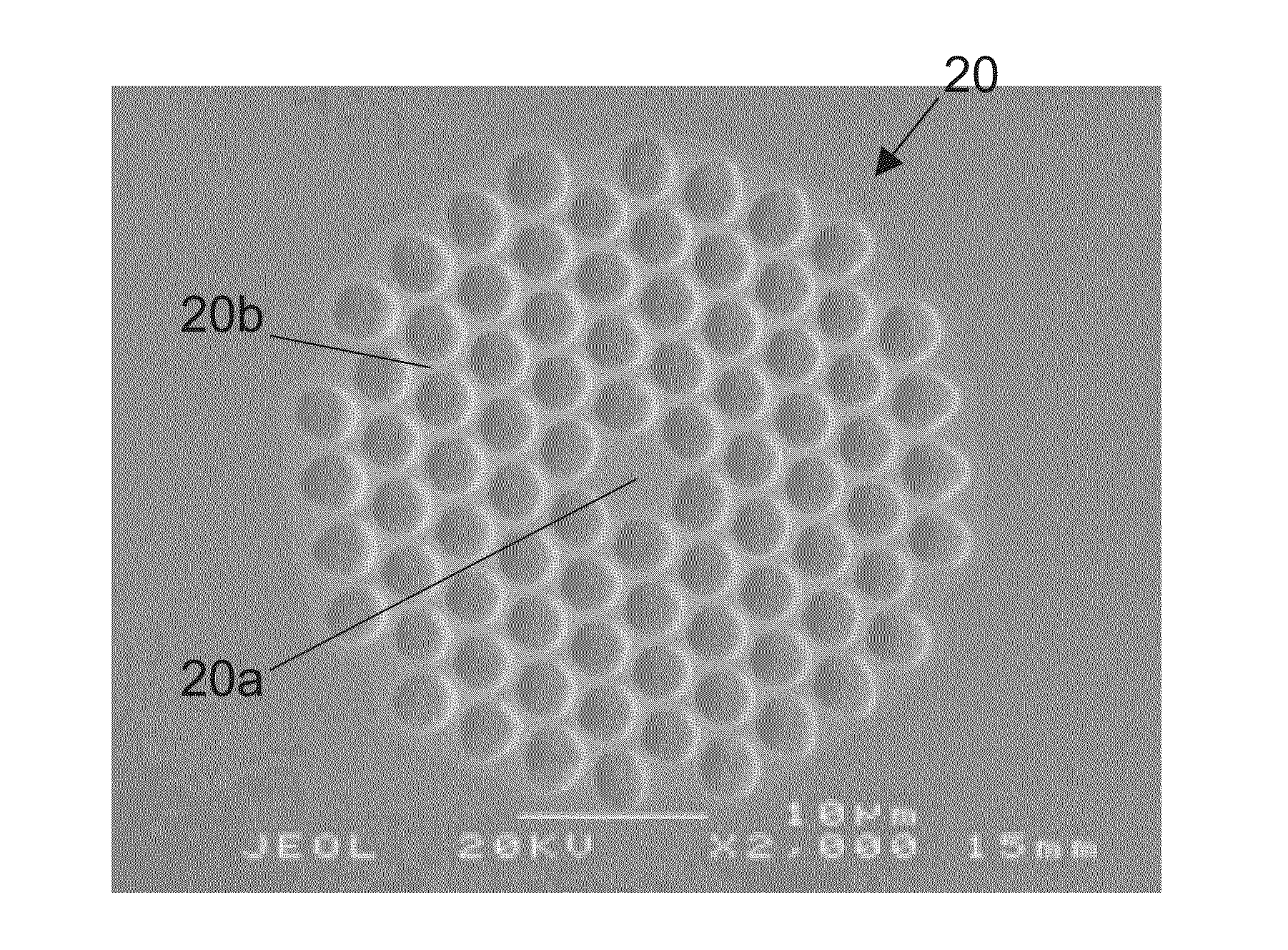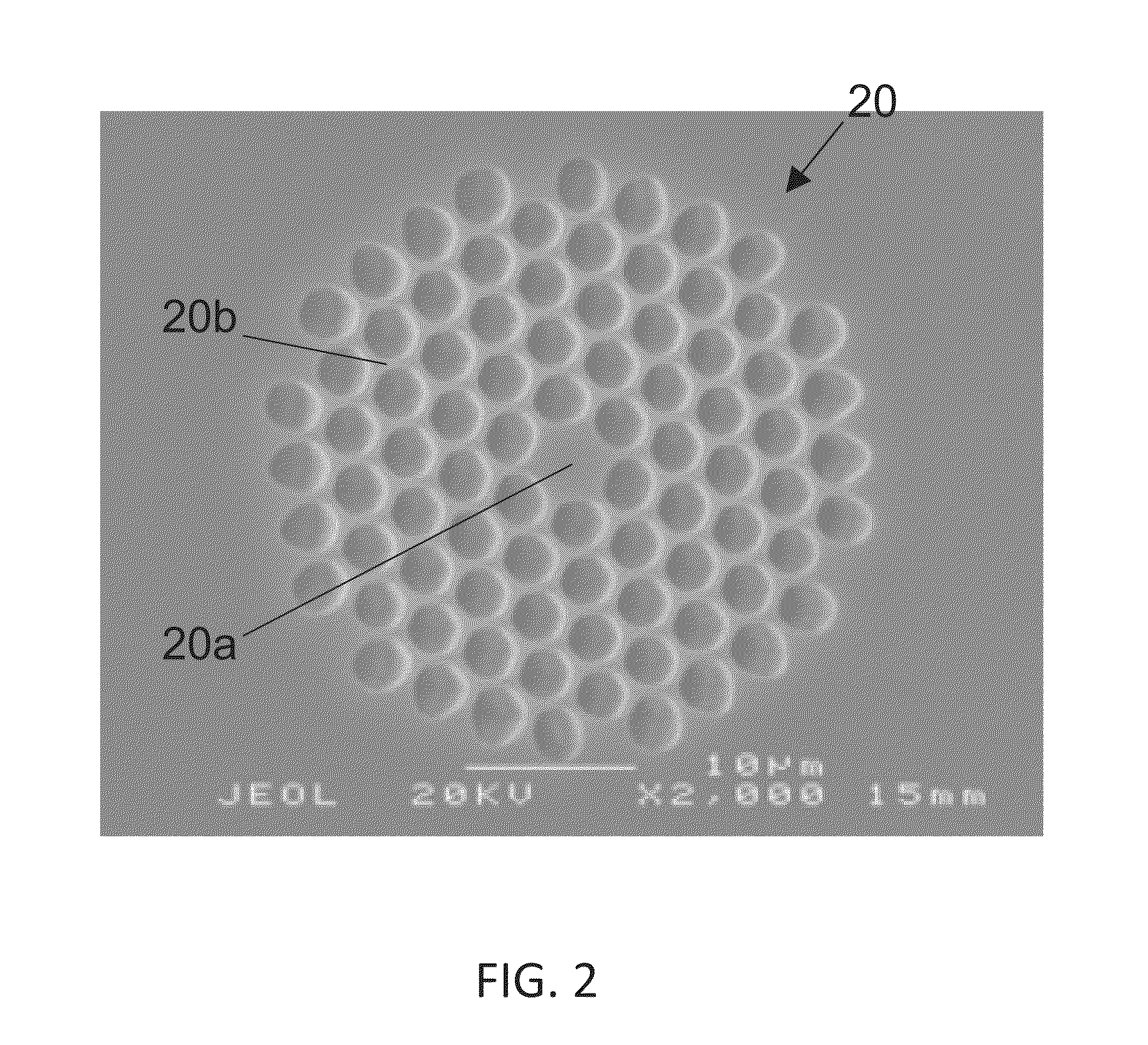Extended spectrum supercontinuum pulse source
a pulse source and supercontinuum technology, applied in the direction of instruments, active medium shape and construction, laser systems, etc., can solve the problems of supercontinuum having an unstable transverse profile, supercontinuum typically having irregular transverse profiles, and needing bulk laser systems, etc., to achieve short blue wavelengths
- Summary
- Abstract
- Description
- Claims
- Application Information
AI Technical Summary
Benefits of technology
Problems solved by technology
Method used
Image
Examples
first embodiment
[0037]Referring to FIG. 1 of the drawings and in accordance with the present invention, the source of optical supercontinuum radiation 10 comprises a microstructured optical fibre 20, fabricated using the stack and draw method, and a pump laser 30. The microstructured optical fibre 20 comprises a core substantially 4.7 μm in diameter and a large index contrast (Δ˜0.03) between the core 20a and cladding regions 20b. The pitch was measured to be substantially 3.7 μm and the ratio d / Λ was measured to be substantially 0.77. An SEM image of a cross-section of the fibre 20 is shown in FIG. 2.
[0038]The pump laser 30 is a Q-switched microchip laser 30 operable to generate infrared lasing pulses of 600 ps to 1 ns duration at a 10 kHz repetition rate, and centred at 1064 nm, which were coupled into the core 20a of a 10 m length of the fibre 20 via an objective lens 40, and the input power of the pump laser was varied by means of a neutral density (ND) filter wheel 50 that was placed in front ...
second embodiment
[0046]According to the invention, a series of three high-Δ fibres were drawn, the fibre 20 as described above and two identical fibres with different outer diameters and hence core sizes, which were measured to be ˜4.4 μm 130 and ˜4.2 μm 140 (the outer diameters of the three fibres 20, 130, 140 are 100 μm, 95 μm and 90 μm). Each of these fibres was separately used to generate supercontinuum in accordance with the arrangement illustrated in FIG. 1. The fibres 130, 140 are multimode at the pump wavelength as is fibre 20, and each fibre, 20, 130, 140 was pumped in an identical manner to that previously described with only the fundamental mode being excited in the individual fibres. The spectra output from each fibre were recorded directly on an optical spectrum analyser. The normalized short wavelength edges of the spectra for each fibre 20, 130, 140 and the modelled group index curves are shown in FIG. 7A and FIG. 7B, respectively.
[0047]Referring to FIG. 7A and FIG. 7B, it is evident ...
PUM
 Login to View More
Login to View More Abstract
Description
Claims
Application Information
 Login to View More
Login to View More - R&D
- Intellectual Property
- Life Sciences
- Materials
- Tech Scout
- Unparalleled Data Quality
- Higher Quality Content
- 60% Fewer Hallucinations
Browse by: Latest US Patents, China's latest patents, Technical Efficacy Thesaurus, Application Domain, Technology Topic, Popular Technical Reports.
© 2025 PatSnap. All rights reserved.Legal|Privacy policy|Modern Slavery Act Transparency Statement|Sitemap|About US| Contact US: help@patsnap.com



